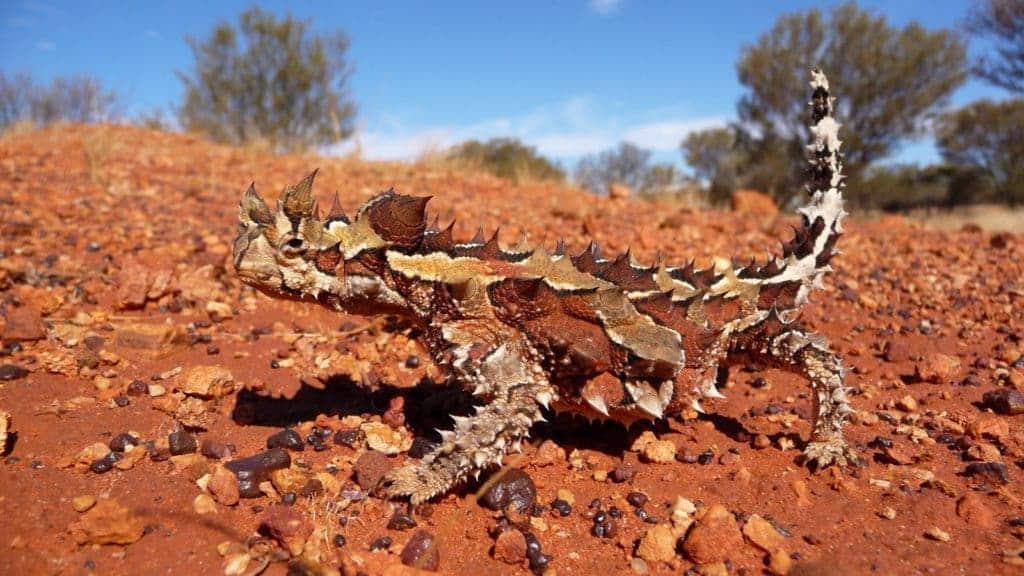These creatures are every bit as amazing as they look. Not only have they perfectly adapted to one of the harshest environments on Earth, but they can drink water through their bodies as they’re buried in the sand.

The thorny devil is an Australian Lizard which grows up to 20 cm (7.9 in) in length, and can live for 15 to 20 years. They’re highly camouflaged with shades of brown that change during hotter and colder days. As if that wasn’t amazing enough, they look like a living cactus, with menacing spikes place all throughout their bodies. It’s exactly those scales that help it survive in the dry, hot environment it inhabits, which makes what I’m about to say really bizarre:
The thorny devil can’t drink water the “normal” way.
Its entire mouth structure is shaped so that it has an easy time munching on ants and is completely unfit for sipping water. This means that even if it encounters a puddle or a source of water, it can’t really drink from it. But there’s a catch: it can drink water with its skin.
The spines are ridged, enabling the animal to collect water from any part of its body. That water is then conveyed to its mouth. So when they want to drink water, capillary channels on the skin squeeze every last bit of water and bring it to the mouth. Most notably, they do this by burying themselves in the sand, gathering the condensed water with their skin.
Philip Withers, a professor of zoology at the University of Western Australia and co-author of the research, said the skin plays a crucial part in the survival of these creatures – but he doesn’t know how it evolved this way.
“Clearly, it’s important for them — this special system has evolved and it’s really quite bizarre,” he said.
When they need a bit of extra water, thorny devils simply bury themselves in the sand and suck the water right out from there.
“I think it might be more important for the extreme circumstances. You get a little bit of rain and the sand gets wet, and then it’s really important to be able to suck the water out of the sand.
This is also an extremely clever defense mechanism. Not only does the little devil defend from predators with its spikes, but its color also helps it to blend in the surrounding environments and hide from sight. The ecological role of this mechanism is to acquire water from all possible sources, while also staying safe, and overall, it’s extremely successful.
Journal Reference: Cutaneous water collection by a moisture-harvesting lizard, the thorny devil (Moloch horridus).






